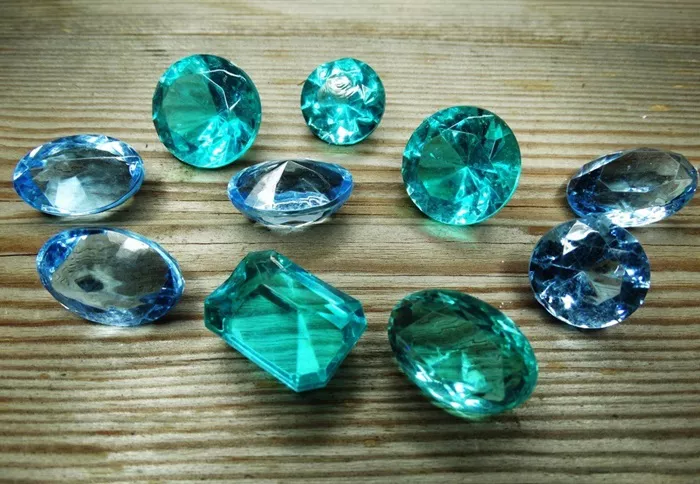Aquamarine is a beautiful blue-green gemstone known for its calming color and stunning clarity. It belongs to the beryl mineral family, which also includes emerald and morganite. Aquamarine has been cherished for centuries for its elegance, durability, and symbolic meanings.
In this article, we will explore the value of aquamarine in detail. We will discuss its history, properties, factors affecting its price, and how to buy a high-quality stone. Whether you are a collector, jewelry lover, or someone looking to invest in gemstones, this guide will help you understand why aquamarine is so valuable.
Introduction to Aquamarine
What is Aquamarine?
Aquamarine is a blue or blue-green variety of beryl. Its name comes from the Latin words “aqua” (water) and “marina” (sea), meaning “water of the sea.” This name perfectly describes its ocean-like color.
Where is Aquamarine Found?
Major sources of aquamarine include:
- Brazil (the largest producer, especially the Minas Gerais region)
- Madagascar (known for deep blue stones)
- Nigeria (produces greenish-blue varieties)
- Pakistan (high-quality, intense blue aquamarines)
- Mozambique, Zambia, and the USA (smaller but significant sources)
Historical and Cultural Significance
Aquamarine has been valued since ancient times:
- The Romans believed it protected sailors and ensured safe voyages.
- Medieval Europeans thought it could rekindle love in marriages.
- It was often used in royal jewelry, including pieces worn by British royalty.
Properties of Aquamarine
Color
The most important factor in aquamarine’s value is its color. The finest stones have a pure, medium-blue tone with no green or gray tints. However, some people prefer a slight greenish hue.
- Pale Blue: Common but less valuable.
- Medium Blue (Sky Blue): More desirable.
- Deep Blue (Santa Maria Color): Rare and highly valuable.
Clarity
Aquamarine is known for its high clarity. Most stones are eye-clean (no visible inclusions). Unlike emeralds, which often have many inclusions, aquamarine’s transparency makes it ideal for faceted cuts.
Cut
A good cut enhances the stone’s brilliance. Popular cuts include:
- Emerald Cut (rectangular with step facets)
- Oval and Round Brilliant (maximizes sparkle)
- Cushion and Pear Shapes (used in rings and pendants)
Carat Weight
Aquamarine is available in large sizes without losing quality. Smaller stones (under 5 carats) are common, but high-quality gems over 10 carats can be very valuable.
Durability
With a hardness of 7.5 to 8 on the Mohs scale, aquamarine is durable enough for everyday jewelry like rings and bracelets. However, it should still be protected from hard impacts.
Factors Affecting Aquamarine’s Value
Several factors determine the price of an aquamarine stone:
Color Intensity
- Vivid Blue: Most expensive.
- Light Blue: More affordable.
- Greenish-Blue: Less valuable than pure blue.
Clarity
- Eye-Clean Stones: Highest value.
- Visible Inclusions: Lower price.
Cut Quality
- Well-Proportioned Cuts: Reflect light beautifully.
- Poor Cuts: Reduce brilliance and value.
Carat Weight
- Larger stones are rarer, so price per carat increases with size.
Origin
- Brazilian and Madagascan aquamarines often command higher prices.
Treatments
- Most aquamarines are heat-treated to enhance color. This is accepted in the industry, but untreated stones are more valuable.
How to Buy a High-Quality Aquamarine
Choose the Right Color
Look for a vibrant blue with minimal green. The “Santa Maria” and “Espirito Santo” colors from Brazil are highly prized.
Check for Clarity
Avoid stones with visible cracks or inclusions. Hold the gem under light to inspect its transparency.
Examine the Cut
A well-cut aquamarine should sparkle evenly. Avoid stones with windowing (areas where light leaks out).
Consider the Size
Decide if you want a smaller, more affordable stone or a larger, investment-grade piece.
Verify Authenticity
Always buy from reputable jewelers and ask for a gemstone certificate (e.g., GIA, AGS).
Compare Prices
Prices can range from 50to1,000+ per carat, depending on quality.
Aquamarine in Jewelry
Aquamarine is popular in various jewelry designs:
Rings
Its durability makes it suitable for engagement rings and fashion rings.
Necklaces & Pendants
The stone’s cool blue tone complements silver and white gold settings.
Earrings
Aquamarine studs or drop earrings add elegance to any outfit.
Bracelets
Often used in tennis bracelets or charm designs.
Celebrity Influence
Many celebrities, like Princess Diana and Elizabeth Taylor, have worn aquamarine jewelry, increasing its popularity.
Aquamarine vs. Other Blue Gemstones
Aquamarine vs. Blue Topaz
- Aquamarine: Natural, more expensive, softer blue.
- Blue Topaz: Often treated, cheaper, brighter blue.
Aquamarine vs. Sapphire
- Aquamarine: Lighter, more transparent.
- Sapphire: Deeper blue, more expensive.
Aquamarine vs. Blue Zircon
- Aquamarine: More durable, less fiery.
- Zircon: Higher brilliance but softer.
Caring for Aquamarine Jewelry
- Cleaning: Use warm soapy water and a soft brush. Avoid harsh chemicals.
- Storage: Keep separate from harder gems like diamonds to prevent scratches.
- Wear with Care: Remove during heavy work or sports.
Conclusion
Aquamarine is a stunning gemstone with timeless appeal. While not as expensive as diamonds or rubies, high-quality aquamarines can appreciate in value, especially rare deep-blue varieties. Its beauty, durability, and historical significance make it a worthwhile addition to any jewelry collection.
Whether you buy it for its aesthetic charm or as an investment, aquamarine remains one of the most beloved gemstones in the world.
Related Topics:
- What Is the Real Value of Aquamarine Stone?
- [Revealed!] Does Aquamarine Hold Value in the Gemstone Market?
- The Timeless Elegance of Diamond and Aquamarine Engagement Rings


